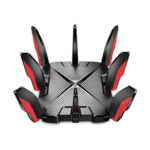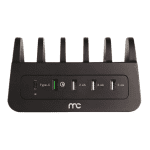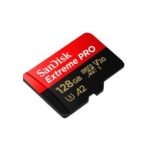All about crypto mining
In proof-of-work (PoW) networks, crypto ‘miners’ from around the world race to solve a mathematical equation. This math problem helps to secure a blockchain network. The miner that solves this math problem first is able to validate and verify all the transactions within the latest block https://steelglassconsulting.com. They are rewarded in the ‘fees’ that users attach to their orders to have their transaction validated (it is not free!), and a network reward.
Bitcoin was initially developed primarily to be a form of payment that isn’t controlled or distributed by a central bank. While financial institutions have traditionally been necessary to verify that a payment has been processed successfully, Bitcoin accomplishes this securely, without that central authority.
A cryptocurrency’s tokenomics are of paramount importance, as they determine the cryptocurrency’s total supply, distribution, and its incentive mechanisms. These are factors that often have a direct impact on the cryptocurrency’s price movements.
All about crypto currency
Many, or all, of the products featured on this page are from our advertising partners who compensate us when you take certain actions on our website or click to take an action on their website. However, this does not influence our evaluations. Our opinions are our own. Here is a list of our partners and here’s how we make money.

Many, or all, of the products featured on this page are from our advertising partners who compensate us when you take certain actions on our website or click to take an action on their website. However, this does not influence our evaluations. Our opinions are our own. Here is a list of our partners and here’s how we make money.
Non-fungible tokens (NFTs) are digital assets that represent art, collectibles, gaming, etc. Like crypto, their data is stored on the blockchain. NFTs are bought and traded using cryptocurrency. The Ethereum blockchain was the first place where NFTs were implemented, but now many other blockchains have created their own versions of NFTs.
Most of the time, when you hear about cryptocurrency types, you hear the coin’s name. However, coin names differ from coin types. Here are some of the types you’ll find with some of the names of tokens in that category:
Nvidia has asked retailers to do what they can when it comes to selling GPUs to gamers instead of miners. Boris Böhles, PR manager for Nvidia in the German region, said: “Gamers come first for Nvidia.”
Since you started reading this guide, you’ve been getting closer and closer to understanding cryptocurrency. There’s just one more question I’d like to answer. What is cryptocurrency going to do for the world?
All about crypto curreny
For beginners, it’s essential to understand what makes cryptocurrency unique, familiarize yourself with common trading concepts such as order books, trading pairs, and order types, and become comfortable with technical analysis charts and tools.
But there seems to be strong long-term potential for a rise in Bitcoin’s value, since businesses like banks, Microsoft MSFT and Tesla TSLA accept it (CEO Elon Musk’s musings on Bitcoin often lead to wild fluctuations) and it looks like more will, over time. And, as Savage noted, the Federal Reserve is studying developing a digital currency.
A blockchain is a database of every transaction that has ever happened using a particular cryptocurrency. Groups of information called blocks are added to the database one by one and form a very long list. So, a blockchain is a linear chain of blocks! Once information is added to the blockchain, it can’t be deleted or changed. It stays on the blockchain forever, and everyone can see it.
You’ll learn about blockchain strengths and weaknesses from case studies and gain insights from interviews with several tech industry leaders to fully understand the economic and legal difficulties with blockchain and cryptocurrencies.
What is crypto investment all about
Each user within a cryptocurrency’s system has a private and public key. Think of the public key as a combination of the routing and account numbers on a bank account, meaning it’s a unique way to send money to you. The private key is how you access your own crypto. It’s like the username and password you use to log in to your bank account. However, unlike with regular bank login credentials, you typically don’t choose your private key and may not be able to recover it if you lose it.
Cryptocurrency investing carries substantial risks and should be approached with caution. This market is prone to high volatility, uncertainty, dishonest practices, theft, and more. However, crypto assets also present unique potential for those willing to accept the elevated risks. By only allocating speculative capital you can afford to lose, dollar-cost averaging into positions, focusing on fundamentally strong projects, utilizing cold storage, and employing disciplined portfolio management, you can more safely navigate these choppy waters.
Cryptocurrency started as a grassroots, anti-establishment movement but has since evolved into a major financial force, embraced by corporations and institutions alike. Its disruptive potential has far-reaching implications for outdated financial systems and investment strategies.With innovations like decentralized finance (DeFi), cryptocurrencies are continually redefining the boundaries of finance and technology. The meaning and impact of cryptocurrency will only continue to expand as new advancements emerge, making it a critical area of exploration for forward-thinking investors.
Rational crypto investors look beyond fleeting market hype and focus on the strength, resilience, and utility of a cryptocurrency’s blockchain. The underlying blockchain, which records every transaction publicly and securely, is the bedrock of any cryptocurrency’s value proposition. For example, Bitcoin revolutionized the concept of money by introducing a completely decentralized financial system, while Ethereum has built a foundation for smart contracts and decentralized applications.Cryptocurrency holders manage their assets through digital addresses, each comprised of a public key for receiving funds and a private key for unlocking and sending cryptocurrency. This system ensures security and privacy, granting users full control over their funds without the need for traditional bank accounts.
Stay objective, think long-term, and consider crypto’s risks relative to your overall finances. Don’t chase fleeting gains. The crypto market will continue maturing, and adoption is growing steadily. Patience and diligence remain essential virtues in the world of digital assets and decentralized finance.



































